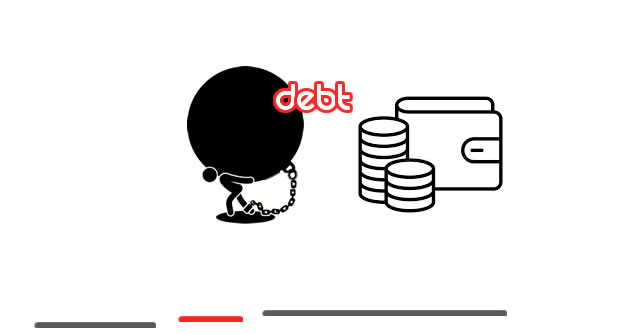Debt can feel like a heavy chain holding you back—whether it’s credit cards, student loans, or medical bills. But the good news? You can take control and break free. This step-by-step guide will show you how to get out of debt, stay motivated, and build a secure financial future.
Why Getting Out of Debt Is More Important Than You Think
- Freedom to live your life: No more sleepless nights worrying about bills.
- Better mental health: Financial stress causes anxiety and depression—paying off debt lifts this burden.
- Opportunities to grow wealth: Once debt is gone, you can save, invest, and plan for the future.
Step 1: Get a Clear Picture of Your Debt
Write down all your debts including balances, interest rates, and minimum payments. This is your starting line.
- Credit cards
- Student loans
- Personal loans
- Car loans
Knowing exactly what you owe is empowering and helps you create an effective repayment plan.
Step 2: Choose Your Debt Repayment Strategy
Two popular and effective methods to tackle debt — choose the one that fits your personality and financial goals:
Debt Snowball Method
Pay off the smallest debts first while making minimum payments on larger ones. This method offers quick wins and builds motivation to keep going.
Debt Avalanche Method
Focus on paying off debts with the highest interest rates first, which saves you the most money in interest over time.
Step 3: Create a Budget That Works
Tracking your income and expenses is key to paying off debt faster. Follow these steps:
- Calculate your monthly income: Include all sources of money coming in.
- List your expenses: Fixed expenses like rent and variable expenses like groceries.
- Find savings: Cut back on non-essential spending like dining out, subscriptions, and impulse buys.
- Redirect savings: Use the money saved to make extra payments on your debt.
Step 4: Consider Debt Consolidation—but Be Careful
Debt consolidation combines multiple debts into a single loan, often with a lower interest rate and one monthly payment. This can simplify your finances, but be cautious:
- Research lenders carefully and avoid high fees.
- Understand all terms before committing.
- Make sure consolidation fits your long-term plan—sometimes it can extend your debt timeline.
Step 5: Avoid Falling Back Into Debt
- Build an emergency fund: Save enough to cover unexpected expenses without relying on credit.
- Live within your means: Stick to your budget and avoid lifestyle inflation.
- Use credit wisely: Only charge what you can pay off monthly to avoid interest.
Common Mistakes to Avoid
- Ignoring the full scope of your debt and making decisions based on incomplete information.
- Overestimating returns from refinancing or consolidation without understanding terms.
- Neglecting ongoing expenses like property taxes, insurance, or maintenance costs.
Your Next Steps to Financial Freedom
Start today by listing your debts, choosing a repayment method, and creating a budget. Remember, consistency is key. Celebrate every small victory and stay committed. Financial freedom is achievable—one step at a time.
Other Posts
- The New Gold Coin for Ghana (GGC): Value, Benefits, and How to Buy
- How to Pay Less Tax in Ghana: Smart Income Tax Planning Strategies for 2025 and beyond
- How to Reduce Your Taxable Income Legally in Canada: 2025 Legal Tax Hacks
- Slash Your IRS Bill: 10 Legal U.S. Tax Reduction Strategies for 2025
- Pension Benefits in Ghana: How to Maximize Your Retirement Contributions
- How to Reduce Your UK Income Tax Bill: 10 Smart Legal Strategies
- Ghana’s 2026 VAT Update: Understand the New Rate and Its Business Impacts
- Gold Soars Above $3,300 as US Chip Export Curbs to China Trigger Market Sell-Off
- US Tightens Chip Export Rules to China: What It Means for Global Chipmakers
- Exchange Rates: How Currencies Gain or Lose Value
- Training for Speed: Expert Tips to Improve Your Sprinting Performance
- SMART Fitness Goals: The Key to Staying Motivated and Reaching Your Fitness Potential
- Fitness Tracking Devices: Do You Really Need a Smartwatch?
- Enhance Your Training with Wearable Fitness Tech: Track, Improve, Achieve
- Why Recovery Matters: Understanding the Role of Rest Days for Fitness Progress
- Fitness Strategies: How to Build Lean Muscle Effectively
- Maximize Your Workout Results: Top Foods to Eat Before and After Exercise
- Real Estate Crowdfunding: A Low-Cost Way to Invest in Real Estate
- Real Estate Investing Strategies: How to Flip Houses & Build Passive Rental Income
- Mobile Payments: The Future of Fast and Secure Transactions
- AI in Finance: How Artificial Intelligence is Revolutionizing Financial Services
- The Future of Insurance: How InsurTech is Disrupting Traditional Models
- Understanding Your Financial Behavior: The Psychology of Money & How to Manage It
- Breaking Free from Debt: Proven Strategies to Achieve Financial Freedom
- The Hidden Dangers of IoT: How to Safeguard Your Connected Devices
- IoT and Agriculture: Feeding the World with Technology
- AI Investing: Best AI Stocks to Improve your portfolio
- AI Creativity : Can Machines Truly Innovate
- IoT For Business Efficiency: Key Benefits and Applications
